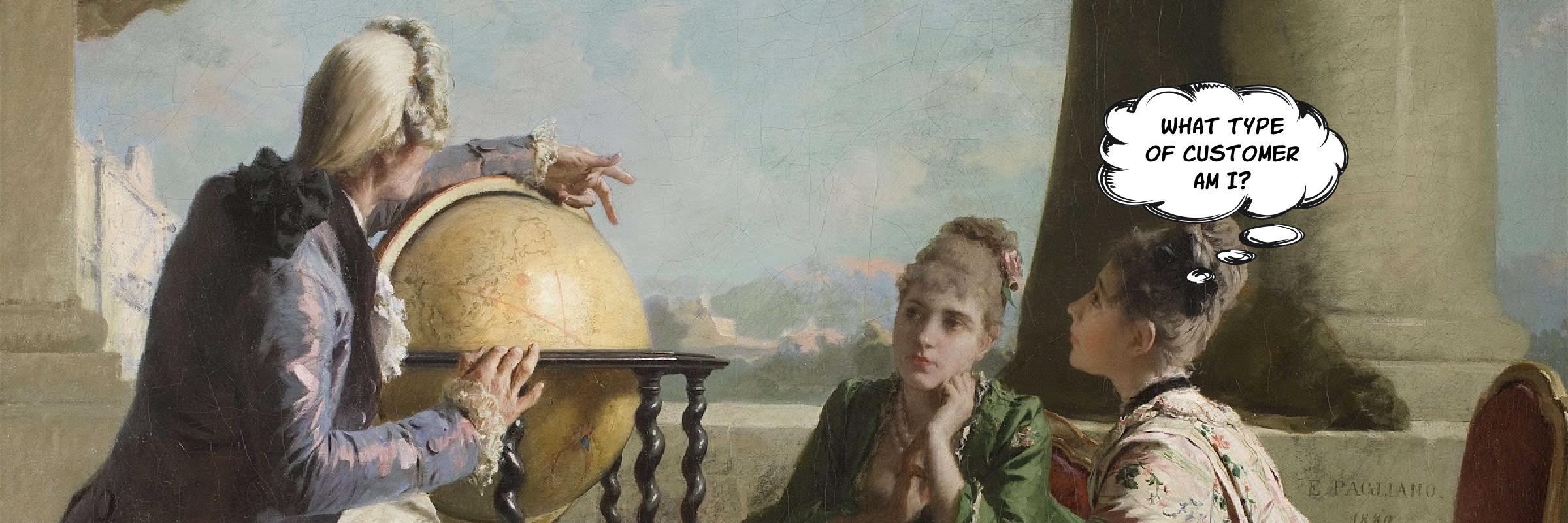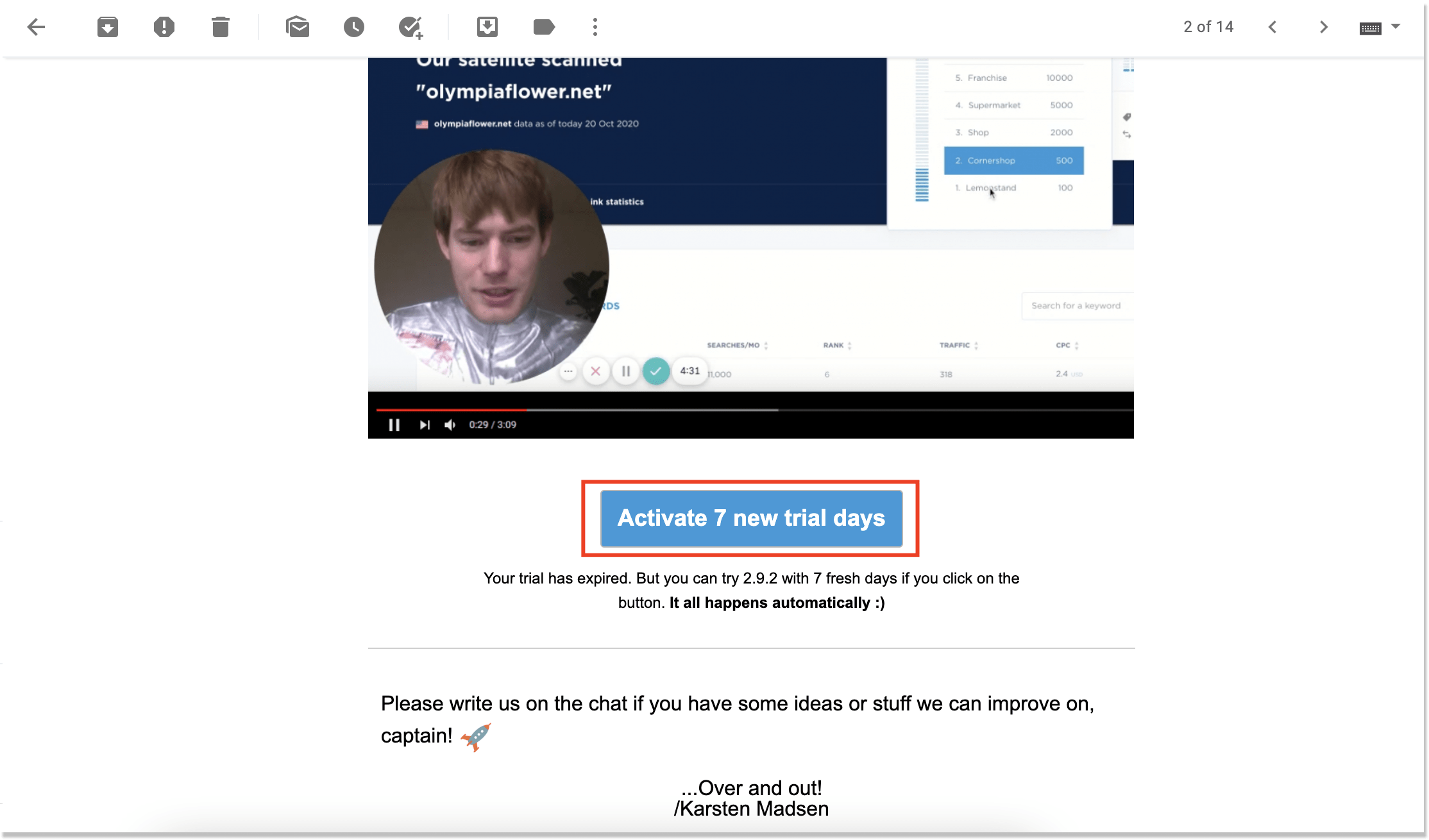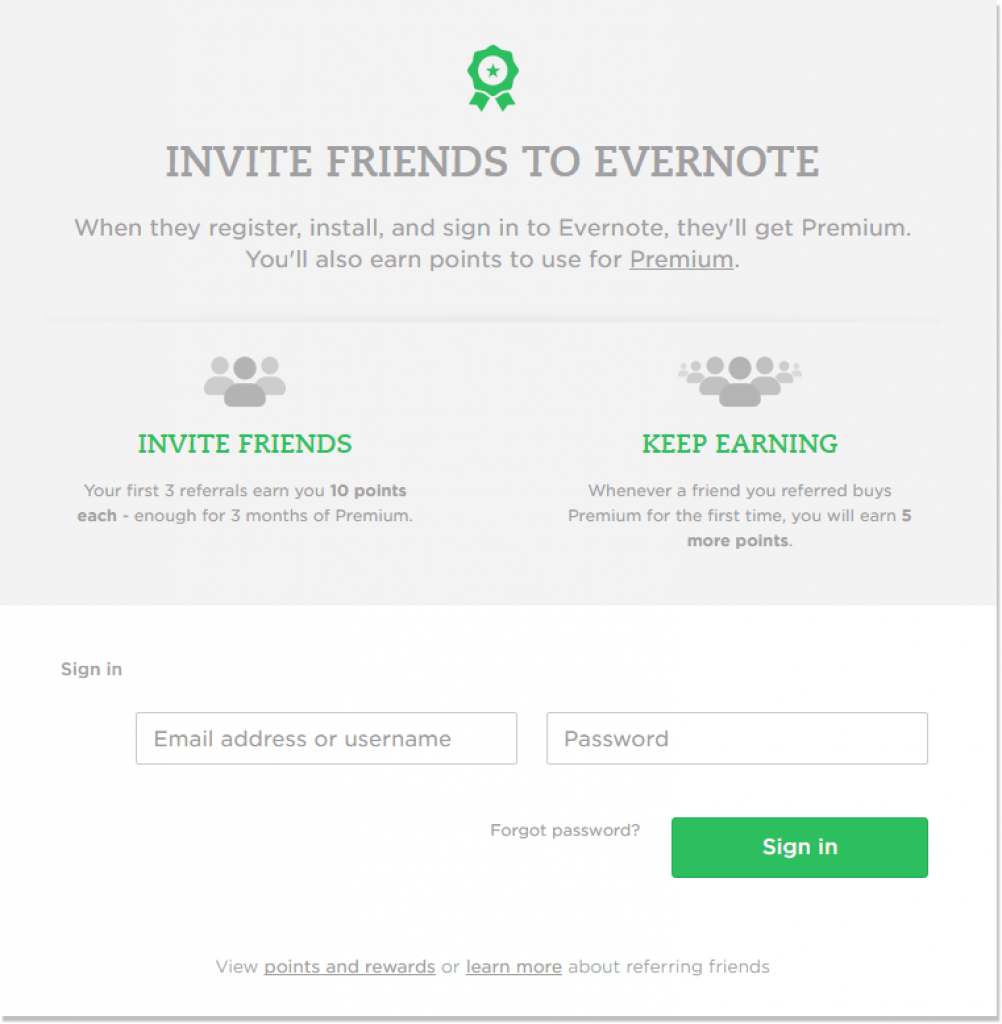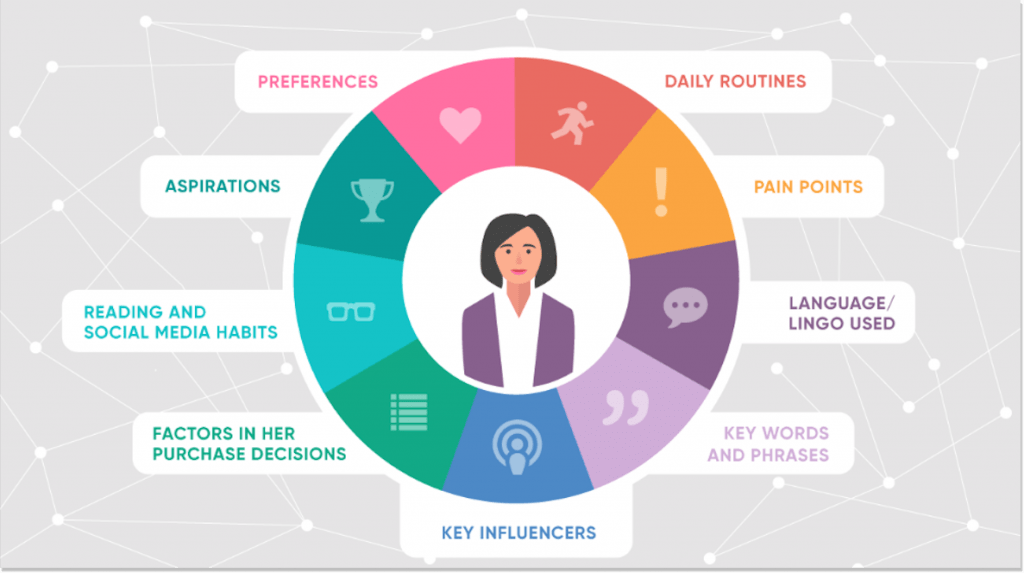10 All-Too-Familiar Types of Consumers in Marketing (and How to Approach Them)
Every client is unique and has a variety of whims. How do you approach them successfully? Find out 10 the most common types of customers and how to treat them properly.
Written by Olesia Melnichenko

Much as you would like, there is no ultimate model your clients may line up with. They all have various personalities, come from different backgrounds, and express versatile demands. Business owners, though, always strive for the only goal: above-the-line customer satisfaction and retention.
How is it possible to handle all these people? Should you follow the same plan? I bet you wouldn’t mind a silver bullet that could help you treat every customer the same way. Well, this is a fat chance. Every client is unique and a one-of-a-kind approach for each of them is needed.
This is what we break down here: 10 types of customers and how to build a rapport with them playing it cool. You’ll find out how to strike the right note with anyone who comes knocking at your door by the end of this article.
Why differentiate the types of customers?
Identifying customer types for a business has something to do with customer segmentation. You split the client base into specific groups based on their hobbies, interests, job titles, and so on. In this very case, you deal with shaping customer personas and catching their needs (this “dividing-clients-into-groups” mechanism remains unchanged).
“Why are those personas important?” you could ask me. Everything is simple: people make up the bedrock of your business. Their demands and interest are the reason why you do what you do. If you fail to cater to them up to par, you are unlikely to win over brand advocates and positive word of mouth. Segmenting audiences and understanding customer needs are fundamental to customer-centric selling, which is considered a powerful strategy for business growth.
This is getting us closer to personalization: the thing marketers chase year after year. According to the recent research, 91% of consumers would continue shopping with brands that remember, recognize, and provide them with relevant offers. Plus, 83% can share their data with a business that practices a personalized approach.
An emotional connection that arouses every time a customer buys something from you is worth gold. This is what businesses usually leverage to create relevancy, encourage loyalty, boost their bottom line.
How can you meet clients’ needs without knowing who they are? We bring up 10 consumer types to give you a leg up in this effort.
10 types of customers and how to treat them
You may interact with people of various behaviors holding any position one way or another. To make your life easier, we gathered all-business types of customers and explained how to handle them at different stages of their buying journey:
- Before the purchase. This is the most important stage in the customer journey. Don’t scare a client away with poor customer service, insufficient product knowledge, or unqualified staff. Try producing a glorious first impression that will work for you in the long run.
- Successful purchase. There you have it. Send a welcome message to a customer greeting them on board. Keep communicating with them and lend a helping hand whenever they need it. Find out how to steer a middle course and satisfy your newly converted customers.
- After the purchase. Keep it going! Make everything so that your brand is remembered even after the deed is done. Try to gain social trust and turn your customers to your friends who can recommend you to their friends…well, you get the idea.
Before the purchase
1. Know-nothing Kevin
Let’s start with those clients who reach out to you to ask something they even don’t know. It could be because of the lack of technical knowledge (not every person is a digithead) or they just don’t see where to look at.
Such customers may not have an account yet, so explaining the details could be a herculean task. They might spend a great amount of time on an FAQ page or navigating your knowledge base. By the way, you can foster self-service if you build a helpful online resource center.
These customers usually need a little nurturing before coming to the final decision. The bright side is that this is your lucky chance to depict your product or service in all its glory.
Express your proactivity and anticipate the requests before they pop up. For that, go for live chat software. Set up targeted messages for specific user groups and tweak them for any valuable website page (pricing, product page, etc.).
Plus, you can track pages with high exit and bounce rates by using a proactive chat rule HelpCrunch has in its arsenal: “Time before exit intent”. Specify the time that a user should spend on a page and shoot a message before they leave with nothing.
If these clients have already signed up for an account but still have no clue what to do, use in-app notifications to fine-tune their experience with your brand. Show the way around your website and listen to the customer’s wishes. Client onboarding, product announcements, special hints, or heads up can be ideal for that. This type of customers may have no affiliation to your brand, so the first impression can shape the deal’s future.
2. Indecisive Ivy
Such clients are quite tough to discern. Though they ask questions and take an interest in your product, such indecisiveness can drive you nuts. Their main boundary is the fear of making an unnecessary mistake and simply flushing money down the drain. Pushy sales pitches may play a cruel joke here.
Another hold point for this type of customer is reconsidering the purchase one step before the final decision. The reasons for that are various: a signing-up form is long or hard-to-understand, an installation routine is tricky, or your security policies are dubious.
You still can handle even the most skeptical clients. Just use these hacks any time you encounter them:
- Adopt a not in-your-face approach
- Follow up regularly to check up on where a customer stands
- Aim at building trust with clients
- Showcase your bounties (refunds, an extended trial period, etc.)
- Offer alternatives to what you’re selling
- Highlight the product value

3. Wandering Will
Try to draw an analogy between offline and online buyers. While spotting the first category is a snap, there may be some issues cracking down the second one. No account yet, no purchasing history, or custom data added to your system.
These clients are “just looking” at your product. They are procrastinating and wasting both their and your time. Who knows, maybe those are competitors fishing out your soon-to-release features. Tell your support team and everyone who is on the frontline out there to keep their eyes peeled.
The customer came to you for some reason which means they have the slightest intention to buy. But there’s one condition: if your offer is worth it. Deal with this group using the tips from the HelpCrunch customer success team:
- Ask guiding questions to clarify what a customer is looking for: “Are you looking for a solution for corporate or personal use?”
- Be OK with ifs and buts, though encourage further interaction: “You are welcome. I’ll be here if any other questions appear to help you find the solution that suits your needs and budget“
- Show a customer the benefit of your help: “Sure, but if you could specify what you need, I would point you in the right direction so that you don’t spend time looking for it by yourself”
4. Thrifty Ted
This is the classic type of customers in marketing you can meet at any time. Though these clients step up their game during your most lucrative discounts and offers. They are the hunters for cut-price deals and extra features.
You can expect to find these customers on your pricing page in search of the exact purchasing terms. When the holiday season comes and you start promo campaigns, be ready to welcome this bargain-hunter all day all night.
These customers can also be beneficial characters. As they are willing to buy any subscription plan or top up their carts to the brim, you can simply upsell or cross-sell to them:
- Show your creative promo landing page where a discount is highlighted
- Say you will be sending discount offers regularly so that a customer catches the hottest deals
- Practice value-based selling techniques
- Provide personalized bargains and “special prices” ONLY for this very client ONLY this time
NOTE: The rule of thumb is that this group usually has no loyalty to your brand. They may not have an account and purchase history yet, but they always seek attention. Train your customer support team to be as kindly as possible to strike the first impression and make a life-long fan of your business.
Successful purchase
5. New Nick
This client has just purchased a subscription from you and is overwhelmed. That’s why they can drop a line to your service team and ask simple questions. Their first impression was great which brought about the purchase, now this is your turn to make this impression last (and win over your new loyal customer).
Everything comes down to good customer service. Amaze such clients with how well you know the product, what special features it may have, and guide your client through their problems.
Make your onboarding process quick and painless, find out what preferred communication channel these clients have, and outline the next steps you will be taking together (for instance, when you will update the customer about an accomplished feature request).
Of all types of consumers, this one is the most important as your attitude can make or break the experience. Offer quick calls or demos when something is unclear. If you do this right, the chances are your customer relations will be long-term.
6. Know-it-all Katie
The group stays with your brand for a long time. These customers are active, they know your product and appreciate the high quality. Such users are hard to wow. However, it doesn’t mean you can let it all hang out.
Active customer campaigns are what you need when it comes to engaging this type of client. The options here are miscellaneous: offer rewards for activity, celebrate milestones, give an elite status, provide extra bonuses (and don’t wait for a user to switch to your competitor). Even if this client has started a trial period and dropped it, they know the basics.
An SEO tool Morningscore nailed it with a well-thought-out email I’ve got from them recently. My trial expired, but they offered me to re-trial their product for a week more. That is what I call a killing customer engagement strategy. Take a good note!

7. Repeat Rose
Meet the ideal type of customers. They are patrons with an account, a huge history with your brand, and trust in what you do. That’s why when you get a message from such customers, the questions are likely to be detailed.
First, let’s dwell on statistics. 40% of ecommerce revenue comes from repeat customers, who make up only 8% of all customers. Repeat customers are nine times more likely to convert than first-time visitors. On top of that, returning customers are likely to spend 300% more on your business compared to new customers.
This is proof that you should deal with such customers with all due respect and a bit more. Consider the following steps to make these customers your brand ambassadors:
- Express awareness with previous interactions and check if there are new issues
- Follow up with their preferred channel
- Make sure your team knows who they interact with
- Treat them like VIPs: provide loyalty programs, maintain a quick response rate, try customer service automation, or share customers’ thoughts on social media
8. Unsatisfied Ursula
We’ve already discussed different types of customers, but this one merits special attention. Show me a brand that hasn’t encountered unsatisfied clients yet? They are everywhere: at a bookstore, groceries, supermarkets, and ONLINE as well.
Customers belonging to this group may provoke everyone they speak to, be unsatisfied with a wrong letter in your message, or just have a rough day (and make you feel outraged). Even a small glitch in your service may be a trigger for great customer’s rage. But take it easy and look through these pieces of advice:
- Don’t take it personally!
- Find the reason for anger
- Focus on the issue, not a person
- Fix the issue as fast as possible
- Don’t try to educate a customer (not helping anyway)
And remember, sometimes just saying “No” to a customer is ok and even preferable.

Our customer success team hardly ever communicates with unsatisfied clients. What helps us prevent a big bang? Well, a cool mind, self-control, and professionalism. By the way, we have recently published the post on how to deal with angry customers. So, go check it. You can find more details and practical tips from professionals at this point.
If a customer crosses the line into being rude, it’s better to share best practices for handling such situations with your team. Knowing how to deal with rude customers will save your support team a lot of time.
After the purchase
9. Loyal Lucy
Though this chunk of your client base may not be so big, it still needs your support and dedication. Such customers are valuable. They spread the word of mouth about your brand and bring new people.
Remember that these clients want to feel appreciated. Give a place where they can express the love to your brand. This can be your success stories page or a social media dedicated post.
Get testimonials and sincere feedback to identify what made them loyal. On top of that, personalized emails and newsletters to inform clients about updates and what impact they bring are really beneficial.
10. Referring Rick
Much like loyal, referring clients are eager to tell the news about your company to everyone. Of all types of consumers, this one can help you drive revenue. Even the best marketing campaign might not bring such results.
How to make these customers happy and treat them properly? Follow my lead:
- Detect all the willing-to-refer clients and listen to the positive feedback
- Provide incentives and motivate your customers with them
- Encourage social media sharing
The note-taking software Evernote launched a referral program that awards points to users every time they make a referral. You can redeem these points for free access to the software’s premium features or upgrade to the Evernote Premium account.

Bottom Line
You probably won’t meet just one type of customers. A mixture of them is likely to happen. Now that you’re aware of how to deal with each of these groups, you’ll be up in arms when, let’s say, an unsatisfied client comes together with a know-nothing one.
Take all these profiles as cues to spiff up your customer service. Sign up for a free 14-day trial with HelpCrunch, welcome your clients with open arms, and make their experience with your brand unique.





